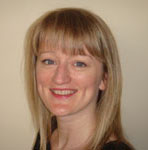Today, I’m talking to non-fiction author Natasha Brooks. Natasha recently self-published her book, Offered and Accepted: A Recruiter’s Guide to Sales. She has 15 years experience as a recruitment consultant. Currently she works as an independent business consultant and trainer, helping businesses to improve their recruitment results.
Natasha, why did you decide to write this book?
Two years ago, I took a break from the corporate world to pursue a long-held dream of writing a novel. Before I embarked on writing fiction, I thought it would be a good idea to get into a writing routine by writing about something I knew – recruitment. I also thought that it would be a useful way to record everything I’d learnt, so I could refer to it when I was back in the job market!
I’d always thought someone should write a sales book for recruiters, and the more research I did, the more convinced I became of the potential demand. After I’d finished the first draft of my novel, I decided that the only way I’d know if the sales book really could be a success, was to publish it.
How long did it take, from planning to holding a freshly-printed copy in your hands?
Almost a year. I had the first draft completed in eight weeks and didn’t look at it again until I’d finished the first draft of my novel. When I went returned to it, the rewriting, rewriting and more rewriting took the best part of six months!
My typical reader is a multi-tasker, with a busy job and a short attention span. The book needed to be organized to reflect the logical stages of the /recruitment process, and the text had to be tight. My first draft was 80,000 words and the final version is 50,000. The book says much more to the reader without those extra 30,000 words!
The final four months were spent designing, proof-reading, finding a printer and the actual production.
Tell me about your writing process.
I ‘mapped out’ the book in sections: chapters; order; essential subjects; sub-topics; additional info and so on. I then – literally – wrote down everything I knew about each topic and tried not to obsess about whether it should be in the book or not. Only then did I start to knock it into shape.
I found it incredibly difficult to decide on the format of the book, and what its ‘voice’ should be. I was overwhelmed at the sheer scale of the task in front of me, so I tried different styles with different chapters and I asked industry contacts what they thought worked. When I found the right style, I had to go back over all the other chapters and bring them into line.
At that point I totally understood why a book like this hadn’t previously been written … those of us that have the subject expertise and experience, rarely have the patience!
Why did you decide to self-publish?
Traditional publishers knocked me back! In fairness to them, I can understand why. It was the height of the GFC and there were no similar books to compare it to. It would have been a risk for them.
My research also suggested that most companies who publish books on universal business topics such as sales, marketing, HR, management etc. launch books in Australia that have already been tested overseas. My perception (and I may be wrong) is that most non-fiction titles that are written and first published in Australia tend to be Australia-specific such as tax, property or celebrity chefs and sports stars.
I also concluded that I was better placed to promote my book within Australia than a traditional publisher. I know my market and parts of my market know me. Let’s be frank … I shouldn’t be writing a book on sales, if I can’t sell my own book!
How did you present your manuscript to the traditional publishers – the whole manuscript or as a proposal?
I followed their submission guidelines to the letter, and that meant submitting proposals rather than the whole manuscript. I only received one standard response – all the others gave considered comments and additional information about other contacts I could try. That encouraged me a great deal.
Which publishing service did you chose and why?
After speaking with other self-published authors and considering my options, I decided to go with a traditional printer, rather than a publishing service because I didn’t feel confident with the latter. The printers that I chose, BrightPrint Group, invited me to meet with them and that laid the foundations for a productive working relationship.
I work as an independent consultant and the book is aimed at my professional peer group – it is basically an advert for me and self-publishing a quality product is a considerable investment. I found using an established, customer-service oriented printing company provided me with the level of support and confidence I needed.
Now I have been through the process once, I may be more inclined to use publishing services, and indeed will have to if demand increases from overseas.
On Wednesday I’ll post the second part of Natasha’s interview. In it, she explains how she’s promoting her book.
Click here for Natasha’s website.
And here for Natasha’s blog.
